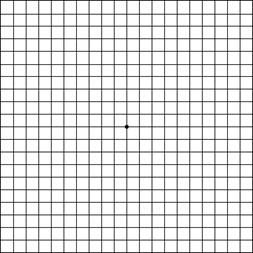Rajendra Apte, M.D., Ph.D., studies the cellular and molecular basis of age-related macular degeneration. Apte is the Paul A. Cibis Distinguished Professor of Ophthalmology and Visual Sciences and Vice Chair of Innovation and Translation at the Washington University School of Medicine in St. Louis. His clinical perspective “Age-Related Macular Degeneration,” appeared today in the New England Journal of Medicine.

Rajendra Apte
What’s the difference between dry and wet AMD? Can I have both?
Dry and wet AMD both affect the light-sensing tissue in the back of the eye called the retina. Dry AMD is characterized by deposits underneath the retina called drusen. Wet AMD is characterized by abnormal, leaky blood vessels in the retina. Most AMD starts as the dry form but can progress to wet or advanced dry AMD in one or both eyes. Dry AMD-related vision loss is due to the death of retinal cells and is not reversible. Wet AMD-related vision loss is due to fluid build-up in the retina and can sometimes be reversed with treatment.
Will I go completely blind?
When diagnosed with AMD, patients are often afraid that they will lose all their vision. Even advanced AMD seldom leads to total blindness. But it can destroy the central vision that enables us to read, drive, and recognize faces. Monitoring and treatment aims to prevent or slow worsening.
What can I do to help my AMD?
Regular, comprehensive eye exams are especially important. I advise AMD patients to monitor their vision with tools such as an Amsler grid to help identify AMD-related changes early and seek care promptly if any are detected. Smoking and high blood pressure are known risk factors for AMD. Smokers should quit and patients with hypertension should work with their health care provider to get it under control. AREDS2 nutritional supplements can reduce AMD worsening, as shown in the NEI-funded Age-Related Eye Disease Studies (AREDS 1 and AREDS2).

The Amsler Grid. The Amsler Grid provides an easy way to test whether or not your central vision has changed. It can recognize even small changes in your vision.
If you need reading glasses, wear them when you look at the Amsler grid. The grid should be at the same distance from your eyes as your usual reading material – about 14 inches. Test both eyes, one at a time, to see if any parts of the grid look distorted, missing, or dark. Mark the areas of the chart that you’re not seeing properly and bring it with you to your next eye exam.
Will I need eye injections forever for my wet AMD?
As I recently stated in The New England Journal of Medicine, drugs that target vascular endothelial growth factor (VEGF) —Lucentis, Avastin, Eylea, and Beovu — have revolutionized treatment for wet AMD, which causes the majority of AMD-related vision loss. Unfortunately, the only way to give these drugs is by injection into the eye. On average, patients receive 7-8 injections during the first 12 months; however, the frequency and duration of injections is determined by disease activity and treatment response. Patients should not stop injections without consulting with their eye care provider.

Dr. Apte examines a patient's eyes.
Would cataract surgery help me?
People with AMD often also have cataracts. Many patients are afraid to get cataract surgery for fear of worsening their AMD or that surgery won’t help them because they have AMD. Patients should discuss the risks and benefits of cataract surgery. The appropriate timing of cataract surgery is especially important for patients with wet AMD.
What can we expect in the future?
Researchers are exploring a variety of new approaches to AMD treatment, including pharmacologic, stem cell-, and gene therapy-based strategies. The development of new AMD therapies like anti-VEGF drugs wouldn’t have been possible without patient participation in clinical trials; however, I encourage patients to talk with their doctor to better understand the potential risks and benefits prior to enrolling in a clinical trial.
Are there any visual aids that can help me?
I encourage patients with AMD-related vision loss to seek help from a vision rehabilitation specialist. Such specialists can guide patients on how to make the best of their vision through visual aids for magnification and improved lighting. They can also offer tips and strategies to best manage vision loss.
Reference
Apte, Rajendra S. New England Journal of Medicine 2021;385:539-47. DOI: 10.1056/NEJMcp2102061.
NEI leads the federal government’s research on the visual system and eye diseases. NEI supports basic and clinical science programs to develop sight-saving treatments and address special needs of people with vision loss. For more information, visit https://www.nei.nih.gov.
About the National Institutes of Health (NIH): NIH, the nation’s medical research agency, includes 27 Institutes and Centers and is a component of the U.S. Department of Health and Human Services. NIH is the primary federal agency conducting and supporting basic, clinical, and translational medical research, and is investigating the causes, treatments, and cures for both common and rare diseases. For more information about NIH and its programs, visit https://www.nih.gov/.